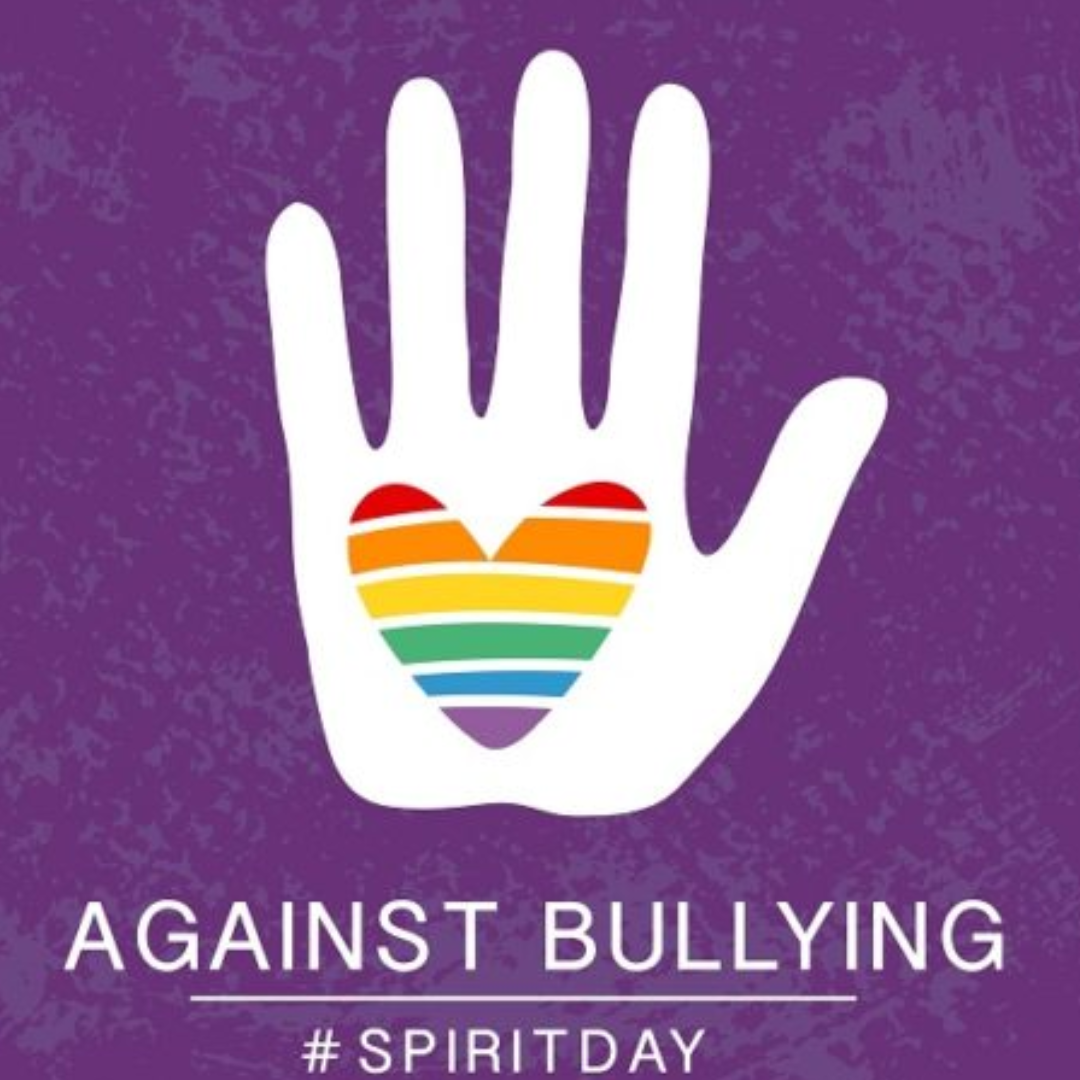
Every year on the third Thursday of October, millions of people wear purple for Spirit Day — a global stand against bullying and a visible show of support for LGBTQ+ youth. In 2025, Spirit Day falls on October 16th, and once again, schools, workplaces, celebrities, and communities will turn purple to send one simple but powerful message: you are not alone.
Bullying has long been a painful reality for queer and trans kids. From classrooms to locker rooms, online spaces to family tables, LGBTQ+ youth often face harassment, isolation, or violence simply for being who they are. Spirit Day transforms that pain into visibility, replacing silence with solidarity and shame with pride.
The Origins of Spirit Day
Spirit Day began in 2010, thanks to a Canadian teenager named Brittany McMillan. Heartbroken by reports of queer teens who had died by suicide after experiencing anti-LGBTQ+ bullying, she wanted to honor their memory and show support for those still struggling.
Brittany invited people to wear purple — the color symbolizing “spirit” on the rainbow Pride flag — as a statement of solidarity. The idea spread like wildfire, and with support from GLAAD, Spirit Day grew into a global phenomenon. What started as one young person’s vision is now one of the largest LGBTQ+ youth support campaigns in the world.
Why Purple Matters
The Pride flag’s purple stripe has always stood for spirit — resilience, inner strength, and authenticity. By wearing purple, people don’t just make a fashion statement; they join a movement. It’s a way to say, I see you. I believe in you. Your spirit matters.
For LGBTQ+ youth who feel invisible or unsafe, these visible shows of solidarity can be life-changing. Imagine walking into school and seeing teachers, peers, and allies all proudly in purple. It’s not just color — it’s community.
The Reality of Bullying for LGBTQ+ Youth
Spirit Day exists because the reality is harsh. Research consistently shows that LGBTQ+ youth are disproportionately bullied, harassed, and excluded.
- According to The Trevor Project, queer and trans youth report rates of bullying significantly higher than their peers.
- Transgender students face misgendering, bathroom bans, and exclusion in sports.
- LGBTQ+ youth of color often navigate layered discrimination from racism and homophobia or transphobia.
- Cyberbullying adds another layer, making harassment inescapable for many.
Bullying doesn’t just hurt feelings — it impacts mental health, academic success, and even long-term safety. Spirit Day works to break that cycle by creating visibility, awareness, and hope.
Beyond the Hallways: Bullying in Every Space
Bullying isn’t confined to schools. It happens at home, in faith communities, in sports, in politics, and online. Spirit Day shines a spotlight on all of these spaces and reminds us that LGBTQ+ youth deserve safety and respect everywhere, not just in certain “tolerant” environments.
How to Show Up for Spirit Day
Spirit Day is simple to join — but the impact is powerful. Here are some ways to participate:
- Wear Purple
The easiest, most visible action. Dress in purple, post photos online, and explain why you’re taking part. - Educate Others
Share resources about LGBTQ+ youth experiences and how bullying affects them. Schools, workplaces, and clubs can use the day to host discussions or workshops. - Be an Ally Every Day
Wearing purple one day is great, but lasting impact comes from daily allyship — respecting pronouns, interrupting bullying, and uplifting queer voices. - Support LGBTQ+ Organizations
Donate to groups like GLAAD, The Trevor Project, GLSEN, or local LGBTQ+ youth centers. - Amplify Stories
Use your social media platforms to share the voices of LGBTQ+ youth. Visibility matters most when it comes directly from those living the experience.
Adults Have a Role to Play
Teachers, parents, coaches, and mentors can be game-changers for queer kids. Studies show that when just one supportive adult is present in a young LGBTQ+ person’s life, the risk of suicide decreases dramatically. Spirit Day is a chance for adults to step up, be visible allies, and ensure that kids know they are loved and supported.
Spirit Day and Intersectionality
Bullying is not one-size-fits-all. Spirit Day reminds us to pay attention to intersectional experiences:
- Black and brown LGBTQ+ youth often face both racism and homophobia/transphobia.
- Disabled queer youth can be doubly isolated in schools.
- Immigrant and refugee LGBTQ+ youth may navigate cultural stigma alongside systemic challenges.
To honor Spirit Day fully, we must listen to the diverse stories of LGBTQ+ young people and commit to addressing all the forces that make life unsafe for them.
The Spirit Beyond the Day
Spirit Day is one day on the calendar — but its energy must carry into every day. Bullying doesn’t stop after October 17th. Allyship can’t either.
That means:
- Advocating for inclusive school policies.
- Supporting anti-bullying laws.
- Building affirming spaces in faith, sports, and culture.
- Celebrating queer joy and resilience alongside acknowledging challenges.
Spirit Day’s purple glow should inspire us to keep standing up, speaking out, and fighting for LGBTQ+ youth year-round.
Why This Day Matters
For LGBTQ+ youth, especially those facing bullying, Spirit Day can be a lifeline. It tells them that millions of people are on their side. It reassures them that their spirit is not broken, even if the world feels hostile. And for allies, it’s a reminder that small acts — like wearing purple — can send big messages of hope.
In a world that still tries to silence queer voices, Spirit Day turns up the volume on love, inclusion, and visibility. It’s not just about clothing — it’s about courage.
In Solidarity, Always
– Ryder
Discover more from Ryder Tombs
Subscribe to get the latest posts sent to your email.


